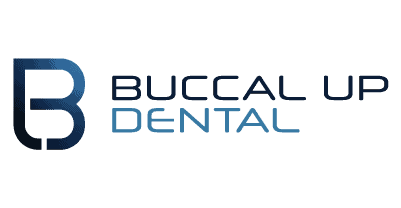
28 May How to Assess Your Dental Practice’s Market Readiness Before Selling
How to Assess Your Dental Practice’s Market Readiness Before Selling
Selling your dental practice is a major decision and a significant milestone in your career. Whether you’re preparing for retirement or moving into a new venture, ensuring your practice is market-ready is critical for achieving a smooth and profitable sale. But how can you tell if your practice is truly ready for the market? This article provides a comprehensive, step-by-step guide to assess your readiness and attract serious, qualified buyers.
Understanding Market Readiness
Market readiness refers to how prepared your dental practice is for a successful sale. A market-ready practice has its finances in order, operations running smoothly, a strong patient base, updated equipment, and a positive reputation. It offers a prospective buyer confidence and clarity about what they are acquiring. Being market-ready increases the chances of a faster sale and a higher valuation.
Why Market Readiness Matters
Many practice sales fall through because of inadequate preparation. An unprepared practice can lead to buyer doubts, legal risks, and lower offers. When your practice is fully market-ready, it sends a strong message to buyers: that this is a stable, valuable business with minimal transition risks. Buyers are more likely to close the deal when they know what to expect and are impressed with your level of preparation.

Step 1: Evaluate Your Financial Health
One of the first things any serious buyer will ask for is a clear picture of your financial performance. This includes analyzing at least the last three years of financial statements. Key areas of focus should include revenue trends, profit margins, overhead costs, and EBITDA (Earnings Before Interest, Taxes, Depreciation, and Amortization).
A financially healthy practice typically shows steady or growing revenue, stable expenses, and a strong profit margin. You should also ensure your books are clean and up to date. Consider working with a CPA who specializes in dental practices to prepare accurate and professional financial documentation.
Step 2: Audit Your Patient Base
The strength of your patient base directly influences the perceived value of your practice. Buyers are not just buying equipment and a space—they are buying a consistent stream of patients. Evaluate your active patient count (those who have visited within the past 18 months), hygiene recall rates, and new patient acquisition metrics.
You should be able to demonstrate strong patient retention, a healthy appointment calendar, and effective recall systems. These metrics will give buyers confidence that the practice has dependable recurring revenue.
Step 3: Assess Operational Efficiency
Efficient operations translate to higher profitability and less risk for the buyer. Start by reviewing your practice management systems, such as appointment scheduling, billing, and patient communications. Are your systems digital and streamlined, or manual and inconsistent?
Evaluate how your staff performs on daily tasks, whether your supply chain is well-managed, and if your workflow is optimized. Practices using modern dental software and digital tools tend to be more attractive to buyers. Efficiency not only boosts profits but also minimizes post-sale disruptions.
Step 4: Legal and Regulatory Compliance
Legal issues are a common deal-breaker. Make sure your practice is fully compliant with all state and federal regulations. This includes licensing, insurance, OSHA and HIPAA compliance, and proper documentation of employee agreements and contracts.
You should also verify that your business entity is in good standing and that there are no pending legal actions against the practice. Have all contracts, leases, and regulatory documents organized and ready for review during due diligence. This step significantly reduces buyer risk and accelerates negotiations.
Step 5: Analyze Your Brand and Online Presence
Today’s buyers understand the power of digital branding. Your online presence plays a significant role in shaping first impressions. Start by assessing your website. Is it professionally designed, easy to navigate, and mobile-friendly? Does it showcase your services and team?
Check your Google reviews and social media pages. Practices with strong online reputations and positive reviews are far more appealing to buyers. Also, evaluate your SEO performance—your practice should appear in local search results for dental services in your area. Tools like Moz Local can help you assess your digital footprint.

Step 6: Examine Physical Assets and Infrastructure
Buyers want to walk into a well-maintained and updated environment. Assess the condition of your dental equipment, furniture, and office layout. Determine the age and functionality of key items like chairs, x-ray machines, and computers.
If your equipment is outdated, consider updating or refurbishing where reasonable. Also, evaluate your lease terms—buyers will want a favorable lease or the option to purchase the property. A clean, modern office improves the perceived value of your practice and reduces transition costs for the new owner.
Step 7: Staff Readiness and Contracts
A stable, skilled team adds significant value to your practice. Buyers will assess your team’s experience, job satisfaction, and likelihood of staying post-sale. Review all employment agreements to ensure they are current and compliant with labor laws.
Identify key employees and their roles. Ensure job descriptions, compensation structures, and non-compete clauses are clear. You may also want to develop a staff transition plan to assure the buyer of continuity during and after the sale.
Step 8: Determine Market Demand
Understanding the local market conditions can help you set realistic expectations. Analyze how many similar practices are for sale in your area, the average selling prices, and who the typical buyers are (individuals vs. DSOs).
You should also consider demographic trends and economic conditions that might affect buyer interest. Local dental brokers can provide insight into current market demand and help you strategically position your practice to stand out.
Step 9: Engage with Advisors and Valuation Experts
Selling a dental practice is complex. Working with a team of experienced advisors ensures you cover all your bases. Engage a dental CPA to organize your financials, a legal expert to review contracts and compliance, and a practice broker to find qualified buyers and guide the negotiation process.
A formal valuation report from a certified dental practice valuation expert adds credibility and gives you a realistic idea of what your practice is worth. Professional guidance can help you avoid costly mistakes and secure the best possible outcome.
Common Mistakes to Avoid
Avoiding common pitfalls can mean the difference between a successful sale and a missed opportunity. These include overestimating your practice’s value, neglecting documentation, ignoring facility upgrades, failing to disclose critical information, and trying to manage the sale without expert help.
Transparency, preparation, and guidance are key. The more informed and prepared you are, the more confident your buyer will be.

FAQs About Selling a Dental Practice
1. How long does it take to sell a dental practice?
Most sales take between 6 to 12 months, depending on the market, location, and level of preparation.
2. What’s the average practice valuation?
Practices usually sell for 60 to 85 percent of their annual collections, depending on profitability, equipment, and patient base.
3. Can I sell if I have outstanding business loans?
Yes. Any remaining debt will typically be paid off at closing using proceeds from the sale.
4. When should I tell my staff I’m selling?
It’s best to wait until the deal is near closing to avoid uncertainty or unrest among staff.
5. What documents will buyers want to review?
Buyers usually request financials, tax returns, leases, staff contracts, compliance certifications, and patient reports.
6. What’s the difference between selling to a DSO and an individual buyer?
DSOs offer streamlined processes and financial backing but may change your practice culture. Individual buyers often prioritize continuity and community presence.
Conclusion
Selling your dental practice is both a financial and emotional decision. By following these proven steps, you can assess your practice’s market readiness, address areas for improvement, and increase your chances of a smooth, rewarding sale. Preparation empowers you to command a higher value and attract more qualified buyers. The better prepared you are, the more leverage you’ll have during negotiations—and the more confident the buyer will feel about making the deal.


Sorry, the comment form is closed at this time.